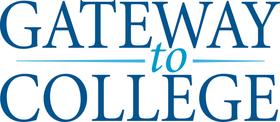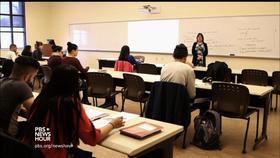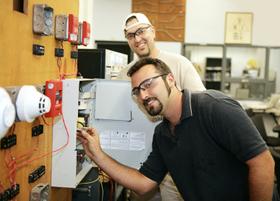The reports and statistics pertaining to current high school dropout rates make for shocking reading. Over 7,200 children drop out of high school on a daily basis, creating over 1.3 million new dropouts annually, according to a Census data review by the Daily Beast. Of course, vocational training and blue-collar jobs are hypothetical alternatives for these teenagers, but with the economy in shambles, entry-level jobs are few and far between. K16 Bridge Plan
The impacts of this educational crisis are best exemplified in cities like Detroit, where only 25% of students graduate with a high school diploma. The Detroit area suffers from high unemployment rates, low income, soaring crime rates, negligible social services, and a generally poorer quality of life – which give high school dropouts few opportunities.
However, community colleges may soon be the savior of high school graduation rates. Innovative new community college programs have been implemented in places like North Carolina, Texas, and California to keep students in high school until they graduate, as well as to help find the places in higher education thereafter.
This video from the National Center for Education Statistics reports on declining high school dropout rates.
The Money Incentive: Community Colleges and Scholarship Programs
Cost is one of the major hurdles associated with higher education in disadvantaged areas. Many students assume that even if they do complete high school, they simply cannot afford to attend college.
To combat these problems, some public school districts are taking it upon themselves to create scholarship programs for high school graduates. As reported by WBT, West Charlotte, for example, has allotted $50,000 to help students pay for the costs of application fees to higher education institutions.
Furthermore, in North Carolina, over $2 million has been allocated to a new scholarship program for black males. Black graduating males now receive $1,000 towards their community college tuition. This new initiative attempts to simultaneously ease financial burdens and provide incentives for at-risk groups to stay in school. Piedmont Community College in Roxboro, North Carolina, has agreed to share costs with local high schools, ensuring that the coalition between high school and community college becomes a successful union.
Bridging the Gap: Community Colleges are Lowering High School Dropout Rates
Students fail to complete high school for a plethora of reasons. However, one major factor influencing dropout rates is the fact that some public high schools fail to prepare students adequately for their future. In underperforming schools, high teacher turnover rates mean educators come and go without sparing the effort to help students plan for college or employment. No plan essentially means students have no short or long-term educational goals – and having no goals means that there is no real reason to stay in school. This catalyst for academic failure is what community colleges hope to correct.
Traditionally, students graduate high school and then apply to community college, but Hartnell College, CA is bringing higher education right to the students. The K16 Bridge Plan has already lowered dropout rates by over 2%, and according to the masterminds behind the Bridge, the positive results are just starting.
The Bridge strengthens the relationship-building process between elementary schools, high schools, and higher education institutions, creating a smoother transition into higher education. Each student constructs a social networking page, where they list career goals and take quizzes to determine their interest in different programs. The K16 Bridge Plan aims to provide every graduating student with a proactive educational plan, and the program is being utilized by seven different Californian community colleges, as well as a community college in Texas.
Texas’ “Closing the Gaps” program is another far-reaching plan aimed at reducing high school dropout rates and increasing enrollment in higher education institutions. State leaders realize that Texas could be heading for a crisis if dropout rates continue on the current trend and have begun “closing the gaps” to enable students to pay for, attend, and find colleges. Community colleges play a critical role in this plan, as it is currently projected that more than 60% of the new students will begin their higher education pathways at one of the areas’ 50 community colleges. Again, the alliance between the state, the high school, and the community colleges is invaluable to the well-being of the student's future and the economy.
This video from the American Enterprise Institute examines the dropout issue.
Middle Colleges: North Carolina’s Third Way
Greensboro, North Carolina was one area where dropout rates were on the increase until Guilford Technical Community College proposed a solution, as reported by the Washington Post.
For students who had already dropped out of the public school system, or were in danger of dropping out, a middle college was opened within the community college classrooms. Students, especially young mothers, could now enjoy the benefits of a high school education free from the constraints of actually learning on a high school campus.
After students graduate high school at this “middle college,” most are choosing to spend the next two years getting an associate’s degree at the same campus. Six middle colleges have been created at different community college locations in the area, and the graduation rate has stabilized around 99%! Interestingly, high school dropout rates have decreased by almost three percent in the Greenboro area since the program was implemented.
Increasing school dropout rates cause enormous social problems countrywide. Not only is society impaired when young people are unable to live up to their full potential, but the youngsters themselves become demoralized, despondent, and disruptive. Utilizing community college campuses and scholarship money to keep children in high school is an invaluable tool that will improve the future for everyone.
Questions? Contact us on Facebook. @communitycollegereview





















































































